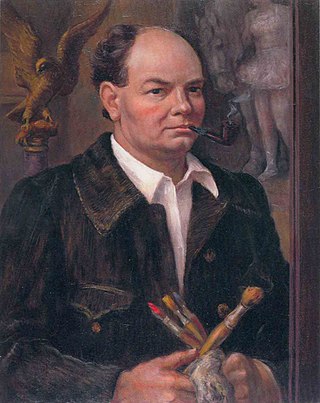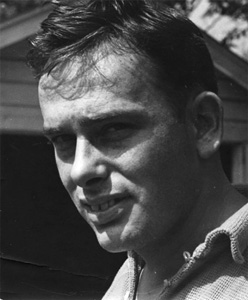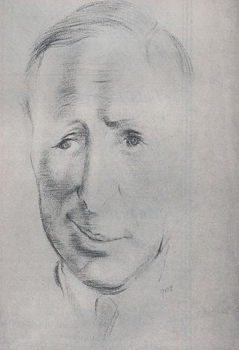
In ancient Greek religion and mythology, Achelous was the god associated with the Achelous River, the largest river in Greece. According to Hesiod, he was the son of the Titans Oceanus and Tethys. He was also said to be the father of the Sirens, several nymphs, and other offspring.

In ancient Roman religion, Abundantia, also called Copia, was a divine personification of abundance and prosperity. The name Abundantia means "abundance" in Latin. She would help protect your savings and investments. Abundantia would even assist someone with major purchases. She was among the embodiments of virtues in religious propaganda that cast the emperor as the ensurer of "Golden Age" conditions. Abundantia thus figures in art, cult, and literature, but has little mythology as such. She may have survived in some form in Roman Gaul and medieval France. Abundantia would carry a cornucopia that was filled with grain and coins. She would occasionally leave some of her grain or money at someone's house as a gift.

In classical antiquity, the cornucopia, also called the horn of plenty, was a symbol of abundance and nourishment, commonly a large horn-shaped container overflowing with produce, flowers, or nuts.

Grant DeVolson Wood was an American artist and representative of Regionalism, best known for his paintings depicting the rural American Midwest. He is particularly well known for American Gothic (1930), which has become an iconic example of early 20th-century American art.

Thomas Hart Benton was an American painter, muralist, and printmaker. Along with Grant Wood and John Steuart Curry, he was at the forefront of the Regionalist art movement. The fluid, sculpted figures in his paintings showed everyday people in scenes of life in the United States.

The Federal Art Project (1935–1943) was a New Deal program to fund the visual arts in the United States. Under national director Holger Cahill, it was one of five Federal Project Number One projects sponsored by the Works Progress Administration (WPA), and the largest of the New Deal art projects. It was created not as a cultural activity, but as a relief measure to employ artists and artisans to create murals, easel paintings, sculpture, graphic art, posters, photography, theatre scenic design, and arts and crafts. The WPA Federal Art Project established more than 100 community art centers throughout the country, researched and documented American design, commissioned a significant body of public art without restriction to content or subject matter, and sustained some 10,000 artists and craft workers during the Great Depression. According to American Heritage, “Something like 400,000 easel paintings, murals, prints, posters, and renderings were produced by WPA artists during the eight years of the project’s existence, virtually free of government pressure to control subject matter, interpretation, or style.”

John Steuart Curry was an American painter whose career spanned the years from 1924 until his death. He was noted for his paintings depicting rural life in his home state, Kansas. Along with Thomas Hart Benton and Grant Wood, he was hailed as one of the three great painters of American Regionalism of the first half of the twentieth century. Curry's artistic production was varied, including paintings, book illustrations, prints, and posters.

American Regionalism is an American realist modern art movement that included paintings, murals, lithographs, and illustrations depicting realistic scenes of rural and small-town America primarily in the Midwest. It arose in the 1930s as a response to the Great Depression, and ended in the 1940s due to the end of World War II and a lack of development within the movement. It reached its height of popularity from 1930 to 1935, as it was widely appreciated for its reassuring images of the American heartland during the Great Depression. Despite major stylistic differences between specific artists, Regionalist art in general was in a relatively conservative and traditionalist style that appealed to popular American sensibilities, while strictly opposing the perceived domination of French art.
Charles Cecil Pollock was an American abstract painter and the eldest brother of artist Jackson Pollock.
Associated American Artists (AAA) was an art gallery in New York City that was established in 1934 and ceased operation in 2000. The gallery marketed art to the middle and upper-middle classes, first in the form of affordable prints and later in home furnishings and accessories, and played a significant role in the growth of art as an industry.
Frederic James (1915–1985) was an American painter who specialized in watercolors. He was associated with the Regionalist art movement.
Harzfeld's was a Kansas City, Missouri-based department store chain specializing in women's and children's high-end apparel.
Wilber Moore Stilwell (1908–1974) was an American depression era artist, White House/National Gallery of Art/American Artists Professional League honoree, inventor, patent holder, author, and Chair of Art, University of South Dakota.

Joseph John Jones (1909–1963) was an American painter, landscape painter, lithographer, and muralist. Time magazine followed him throughout his career. Jones was associated with the John Reed Club and his name is closely associated with its artistic members, most of them also contributors to the New Masses magazine.

Thomas Craven was an American author, critic and lecturer, who promoted the work of American Regionalist painters, Thomas Hart Benton, John Steuart Curry and Grant Wood, among others. He was known for his caustic comments and being the "leading decrier of the School of Paris."

Tragic Prelude is a mural painted by the American artist John Steuart Curry for the Kansas State Capitol building in Topeka, Kansas. It is located on the east side of the second floor rotunda. On the north wall it depicts the abolitionist John Brown with a Bible in one hand, on which the Greek letters alpha and omega of Revelation 1:8 can be seen. In his other hand he holds a rifle, referred to as the "Beecher's Bibles". He is in front of Union and Confederate soldiers, living and dead, with a tornado and a prairie fire approaching. Emigrants with covered wagons travel from east to west.

Ajax is an oil-on-canvas painting by the American artist John Steuart Curry, created in 1936–1937. It depicts a well-fed Hereford bull with two cowbirds on his back. The painting is on view at the Smithsonian American Art Museum, in Washington, D.C.

Tornado over Kansas is a 1929 oil-on-canvas painting by the American Regionalist painter John Steuart Curry. It depicts a dramatic scene in which a family races for shelter as a tornado approaches their farm, and has compositional connections to Curry's earlier 1928 painting Baptism in Kansas. The artist is believed to have been influenced by Baroque art and photographs of tornadoes. He developed a fear of natural disasters and a reverence towards God during his childhood, both of which are apparent in the painting.

James Duard Marshall was a painter, lithographer, museum director, and art conservator who lived most of his life in Kansas City. Duard [pronounced "doo-erd"] was a student of Thomas Hart Benton and is best known for his 30-foot mural created for the centennial of Neosho, Missouri in 1939. The civic leaders of Neosho had approached Benton to produce the mural, as Benton had been born in Neosho, but he suggested that his student Marshall do the job. That mural hangs in the Neosho Newton County Library.













